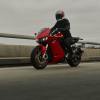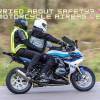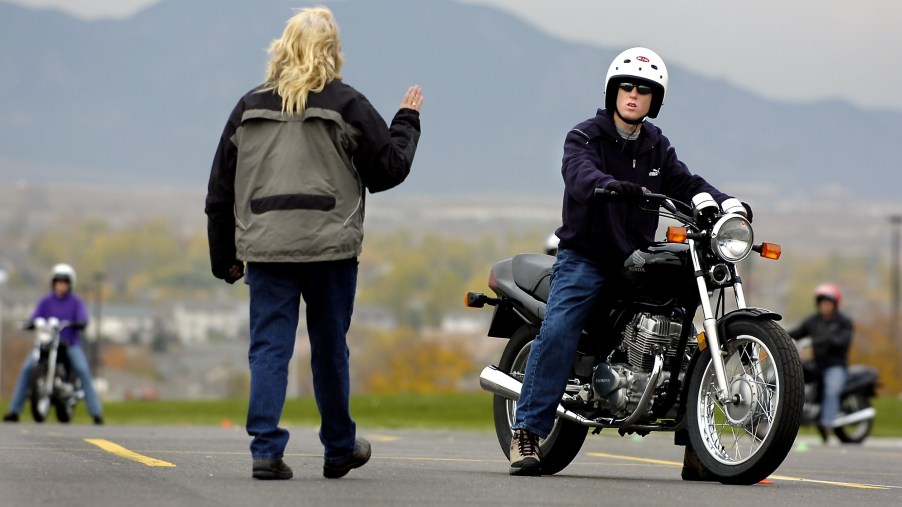
8 Motorcycle Safety Tips for Riding on City Streets
Motorcycle city riding safety tips guide highlights:
- The most important motorcycle safety tip for city riding is to assume that you’re invisible
- To make sure drivers see you, vary your lane position, use the two-second following rule, and wear brightly colored and/or high-vis safety gear
- Also, practice your motorcycle braking, adjust your mirrors properly, and attend a Motorcycle Safety Foundation course
Since riders can finally wake up their winterized bikes now, it’s no surprise that May is Motorcycle Safety Awareness Month. Admittedly, a significant portion of that awareness is making sure drivers see riders, rather than plow into them. But riders have safety responsibilities, too, and no, getting louder pipes isn’t one of them. And whether you’re a beginner or a veteran, if you plan on riding in a crowded city, keep these motorcycle riding tips in mind.
The #1 most important motorcycle riding safety tip? Ride like you’re invisible
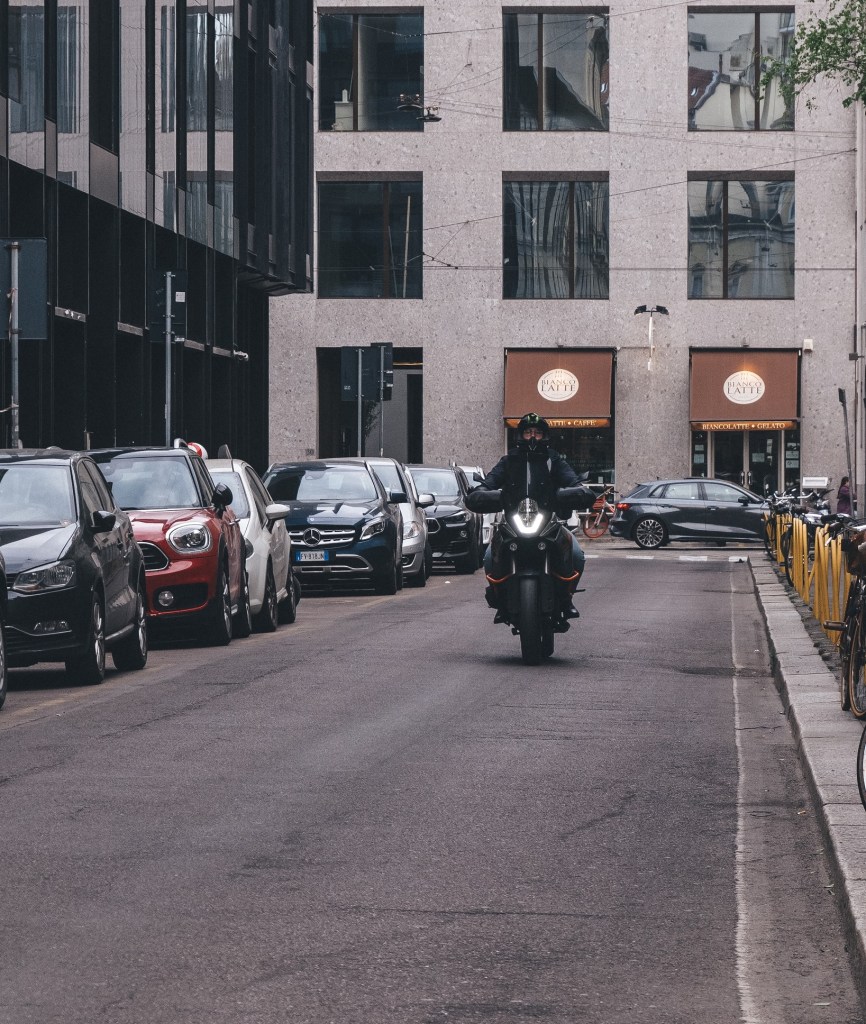
If you retain nothing else from this list of motorcycle riding safety tips, remember this: you are invisible. There are blunter ways of putting it, but every rider has this idea drilled into their heads from day one. And virtually every other tip on this list flows in some way from it.
It’s not just that drivers don’t pay attention to motorcyclists, though that is a significant safety problem. For one, cars, trucks, and SUVs have significantly larger blind spots than motorcycles, partially thanks to built-in safety features. Because bikes are narrower and shorter than cars, they can easily disappear into those blind spots. Add in an over-reliance on driver-assistance systems and you have a recipe for crashes.
Furthermore, even if a motorcycle is clearly visible at an intersection, drivers often fail to mentally recognize its presence. It’s the size disparity thing again, which also causes many drivers to underestimate the bike’s speed. This is particularly noticeable at T junctions, which interfere with human binocular vision and thus our depth perception. And this can all happen at open intersections—imagine coming out of a blind alleyway.
Hence why the most important motorcycle safety tip is acting like you’re invisible. Scan far down the road, not just to pick out obstacles, but identify where oncoming cars might get in your way. Know where vehicle blind spots are; stay out of them and within sight of car mirrors. Also, use your turn signals religiously as well as the brakes when slowing down so your brake lights turn on. And always have potential escape routes planned in case you need to dodge suddenly out of the way.
To stay visible, watch the road and vary your lane position
The good news is that more blind-spot monitoring and pedestrian detection systems are picking up motorcyclists. But as noted earlier, even the best tech can’t prevent every crash, hence why assuming you’re invisible is a key motorcycle safety concept. However, there are ways of increasing your visibility, which is what these next lane-related motorcycle riding tips are about.
Unlike cars, bikes are small enough to move within a lane. Changing positions like this isn’t just for lane splitting and filter, though. Because bikes need to lean and countersteer to turn at speed, lane position is also tied to performance and handling. And it’s also an important safety consideration.
Firstly, changing your lane position makes your motorcycle a moving object, which human eyes pick up more easily than static ones. It also makes your bike appear bigger. So, if you move your bike around, the drivers around you will notice you better. Secondly, varying your position like this lets you see around obstacles and gives you more time to react to things, Motorcyclist explains. This can also give you more escape routes.
In addition, while you should be scanning the road ahead and around you, examine the road itself, too. Potholes, debris, and oil slicks aren’t just annoying, they’re also hazards that you should avoid. Just make sure that avoiding them doesn’t put you in harm’s way. Remember, you’re invisible.
The two-second rule can be one of the most difficult, but helpful, motorcycle riding tips to follow
This next motorcycle safety tip isn’t easy to follow in the tight confines of urban gridlock, but it’s very helpful. And not just on a motorcycle, but behind the wheel of a car, too. This tip is about your following distance.
You likely know not to follow a semi-truck too closely so the driver can see you. But increasing the distance between you and any other vehicle also significantly reduces the chances of a collision. That’s because it gives you more time to react and more space to slow down without hitting them. And all these things are vital if you want to safely ride a motorcycle in the city.
Your minimum safe following distance varies based on your speed, but it’s kind of hard to use a yardstick on a bike. However, you don’t need one. When the car in front of you passes a fixed landmark, start counting. If you pass that landmark within the next two seconds, you’re too close. This is the two-second rule, though it’s more of a minimum motorcycle safety guideline. So, at higher speeds, especially if your bike lacks ABS, you might want to increase the distance.
As a Chicagoland native, I understand how difficult it is to keep a two-second following distance in a car, let alone on a bike. But it’s absolutely worth trying to maintain.
Before riding in the city, practice these motorcycle brake safety tips in empty parking lots
Speaking of ABS, it’s just as beneficial for motorcycles as it is for cars. I say that with firsthand knowledge as someone who just skidded their non-ABS-equipped bike during a recent panic stop. But as with ADAS on cars, ABS is merely a tool: it doesn’t replace experience or technique. So, for maximum riding safety, you need to keep some braking tips in mind.
Firstly, especially in low-speed situations, cover your brakes. By that, I mean have at least a few fingers hovering over your front brake lever and your toe close to the rear brake pedal. The closer your hand and foot are to the brake controls, the faster you can slow down.
Secondly, understand that the front brake on a bike is significantly stronger than the rear one. This doesn’t mean you should avoid using it for fear of going over the handlebars, though, Motorcyclist notes. Rather, you need to use the rear brake not just to stop in time, but also to keep both tires on the ground. Plus, using the rear brake can prevent wheelies and sharpen your turns at low speeds, RevZilla says. That’s particularly helpful if you’re carrying a passenger, especially if they’re not used to riding two-up.
On that note, the only way you can drill these brake-related motorcycle riding safety tips into your body is to practice. True, you can practice the two-second, obstacle scanning, and escape route planning in a car. But cars don’t risk reverse-wheelieing like bikes. So, before you risk the city streets, find an empty parking lot, and get used to feeling your motorcycle pitch as you brake. It might be scary, but you will get used to it. And learning it in a controlled environment is way better than trying to do it on a chaotic road.
Improve your city motorcycle safety by adjusting your mirrors properly
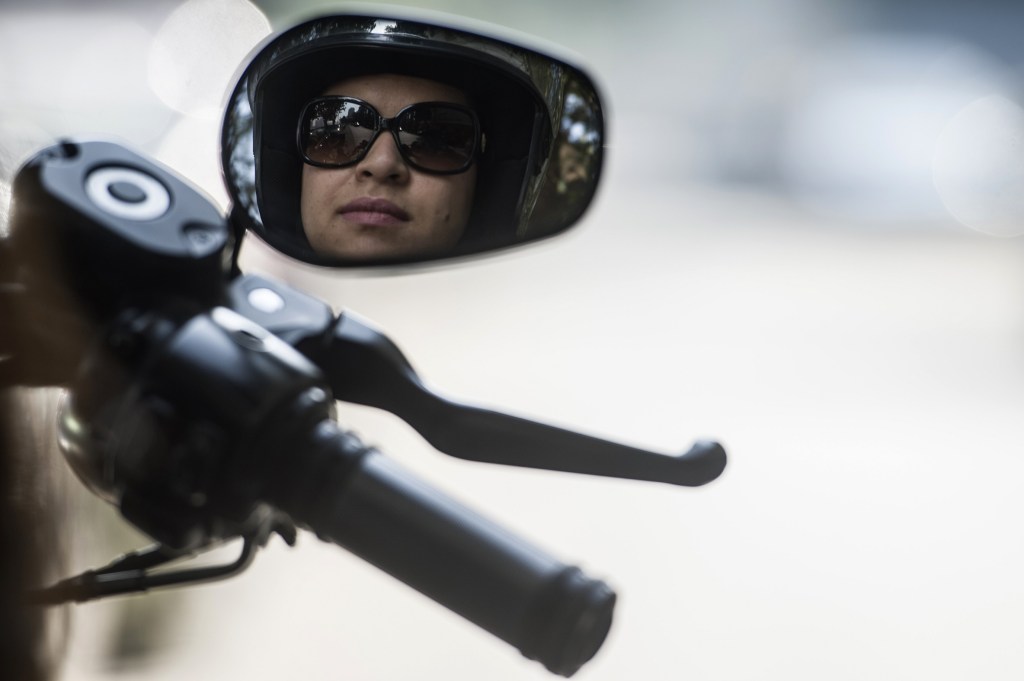
Some riders change their mirrors purely for aesthetic purposes. However, swapping out your motorcycle mirrors can have safety benefits, too. But whether you go aftermarket or stay stock, those mirrors need to be positioned correctly.
No matter if they’re on a bike or a car, mirrors have the same job: letting you know what’s happening around you. Motorcycles, though, are at a disadvantage compared to cars because they don’t have dedicated rear-view mirrors. So, bike mirrors need to reflect not just the road on either side but also behind the rider. Yet you can’t angle the mirrors back too much because that needlessly overlaps their fields of view and cuts down on side vision. In short, finding the best mirror position is a delicate balancing act.
Keep in mind that no mirror perfectly eliminates blind spots. So, if you need to make a lane change, always check over your shoulder before sliding over. But ideally, your mirrors should let you see most of the road on either side and behind you without turning your head. And you should check those mirrors roughly every five seconds, RevZilla claims.
‘All the gear, all the time’ is a vital safety maxim
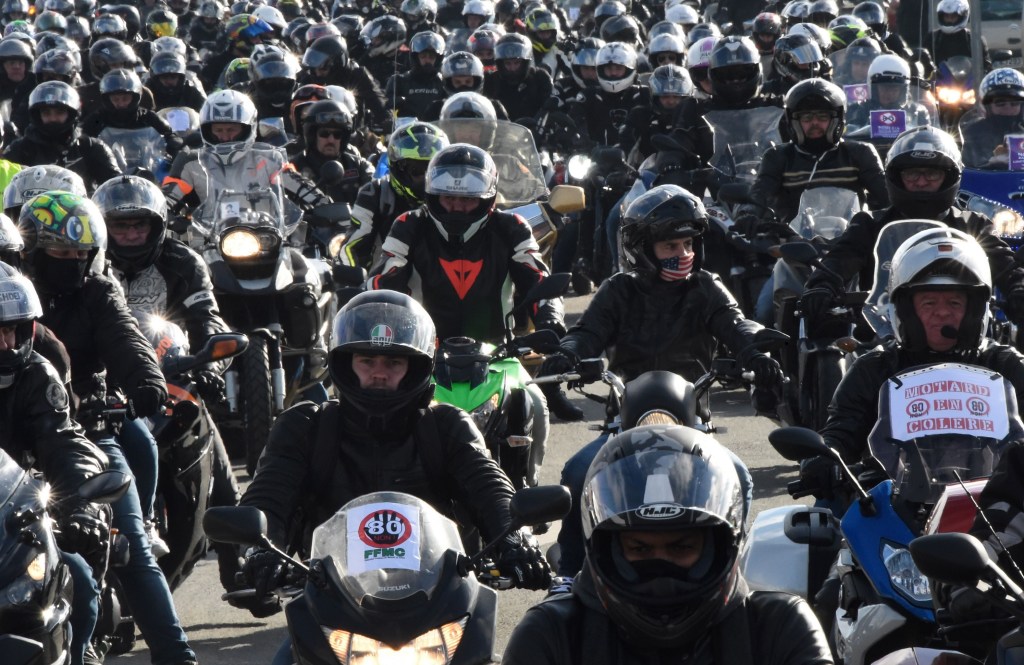
Up until now, the motorcycle riding safety tips I’ve mentioned are all about techniques and strategies. But this next one is about your gear. Put simply, wear all of it every time you ride.
Look, I get it, summer is hot, and you want to feel the breeze on your skin and face. But sweat is easily replenished; your skin and bones aren’t. That means wearing an armored jacket, pants, boots, and proper motorcycle gloves. Also, arguably most importantly, a well-fitting motorcycle helmet. And if you really want to go the extra safety mile, you can invest in a motorcycle airbag jacket or vest.
It’s worth noting that armor and abrasion-resistant motorcycle safety gear only does so much. Therefore, your best bet is to avoid collisions and accidents rather than face them head-on, which also means following the rules of the road. But staying safe in the city means not shirking on your gear, no matter the season. And while not every new rider will immediately have all this gear on hand, they should get it ASAP.
Black looks cool, but for maximum city safety, get brighter motorcycle riding gear
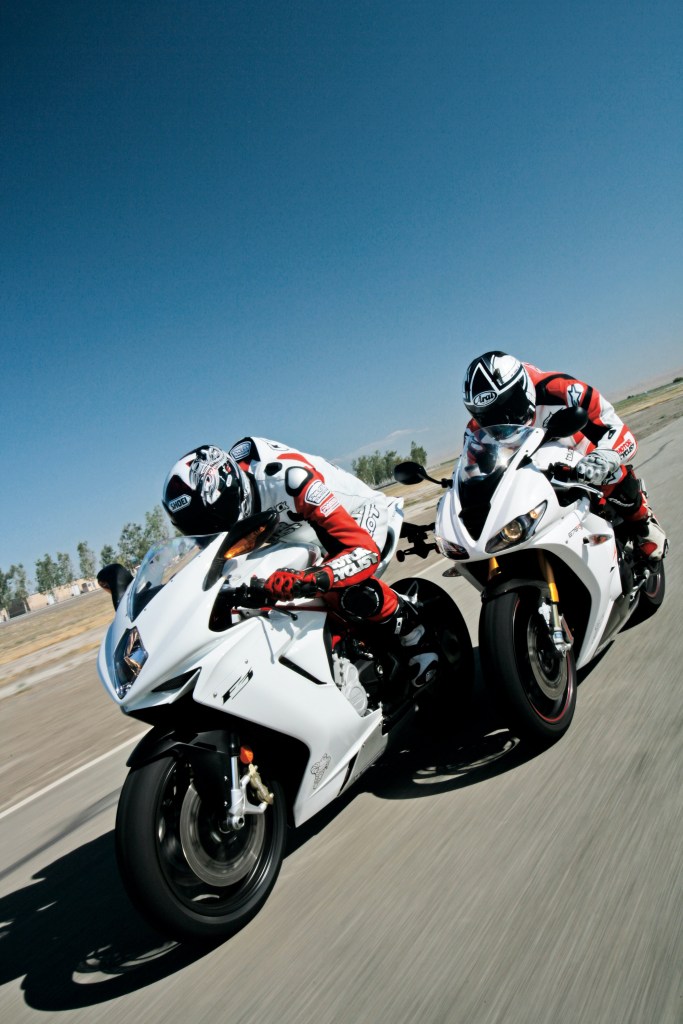
The stereotypical image of a motorcycle rider clad in a black leather jacket isn’t just a style statement. Leather is one of the best anti-abrasion materials and insulates well if lined. Meanwhile, black doesn’t show oil or dirt stains and absorbs heat, which is great for chilly rides. However, whether it’s leather or synthetic, black motorcycle gear has a safety problem: poor visibility, especially at night.
Fortunately, this is easily fixable. For one, if you can, buy brightly-colored motorcycle gear. I’m talking bright red, neon green, highlighter yellow, teal, etc. Also, consider buying gear with high-vis and/or reflective strips. Or, if that’s not an option, buy reflective material and stick it on your gear and bike, Motorcyclist advises.
Remember, you don’t want people to think you’re invisible when you’re riding in the city. Dazzling them with your wardrobe is a great way to avoid that.
You can learn all these riding tips and more at a Motorcycle Safety Foundation course
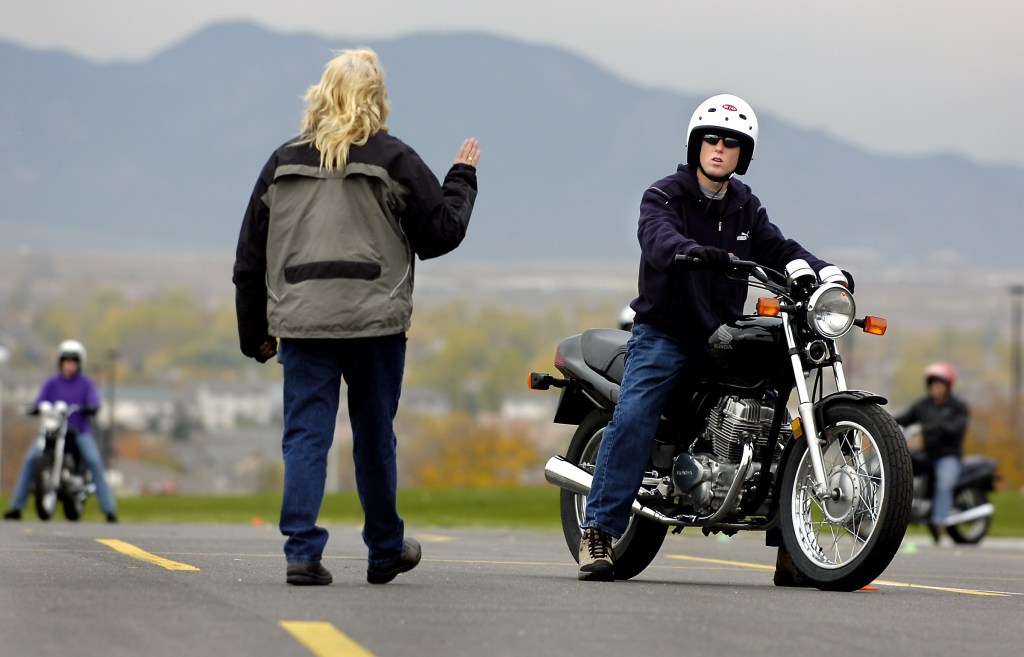
Earlier, I said that the most important motorcycle riding safety tip, assuming that you’re invisible, is drilled into every rider’s head. It was drilled into my head at the Motorcycle Safety Foundation’s Basic Rider Course. And I cannot recommend it enough to those interested in riding.
The MSF doesn’t just do introductory safety courses for beginning riders, though. It also has advanced courses for experienced and returning riders—and these require you to bring your personal bike. In addition, the MSF recently started teaching off-road lessons as part of its Adventure Bike Rider Course, RevZilla reports. And all these courses are taught by experienced instructors who will teach you how to ride safely, regardless of the conditions.
Yes, there’s a lot to keep in mind when you’re riding through the city. But though it seems intimidating, like anything else, it just requires careful, mindful practice. Here’s hoping they help you experience the road on two wheels soon.
Follow more updates from MotorBiscuit on our Facebook page.
